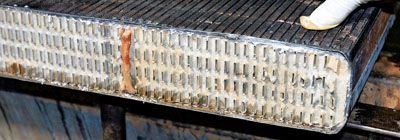
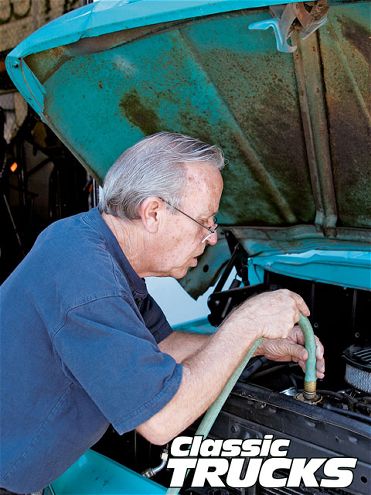
Falling victim to radiator boil over or having your engine vapor lock while cruising through town is never a good thing. Finding yourself in the left turn lane at a red light with the engine sputtering and the temp gauge rising has certainly put some extra beads of sweat on many a brow. And while some may enjoy pushing a steaming truck through a busy intersection while Joe Public lashes obscenities, there really isn't a good reason why any of our trucks "shouldn't" be running cool to begin with. A properly set up cooling system should be able to keep even the most radical engine configurations in the most cramped engine compartments at or under a realistic operating temperature. That being said, though, it is a common problem we see day in and day out at events across the country, and even on some of our own projects. But before one can tackle a cooling system issue, we need to understand the basics of said system and what causes most vehicles to overheat in the first place.
The standard liquid cooling system is made up of passages inside the engine block and heads where coolant is circulated via a water pump and cooled by passing through a radiator, controlled by a thermostat, and pressurized by the radiator cap. The circulating coolant soaks up the heat from the engine as it travels through the water passages in the block and heads and is cooled by the airstream as it travels through the radiator. Once cooled, it travels back through the engine to absorb more heat. To ensure that the coolant stays at or above a certain temperature and that the water pump doesn't force the coolant through the radiator too quickly, a thermostat is used between the engine and the radiator. When left out, the coolant is "pushed" through the radiator and not allowed sufficient time to cool in the air stream. Conversely, the absence of the thermostat can lead to an engine that never reaches optimum operating temperature (usually between 190-195 degrees). In order to prevent the coolant from boiling, the system is pressurized, raising the boiling point considerably. Too much pressure however, can cause the hoses and other parts to burst, so a radiator cap designed to release pressure at a specified point is used. The pressure released by the cap is contained in an overflow container and plumbed on a closed system that returns the coolant back to the radiator once the pressure has subsided.
An overheating situation can occur anytime the cooling system's ability to absorb, transport, or dissipate heat is breached. This can be caused by something as simple as low coolant level or a defective radiator cap to poor airflow through the radiator. The ability of the cooling system to properly circulate coolant through the engine and radiator directly affects its ability to shed heat. When the coolant's circulation is restricted by means other than the appropriate thermostat, temperatures begin to rise and the engine starts to overheat. Additionally, if the airflow through the radiator is inefficient, such as at low speeds or due to a faulty fan, the radiator will fail to do its job.
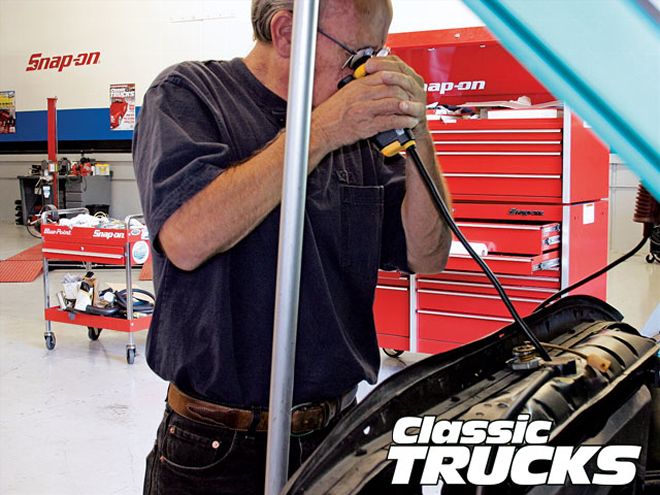 Dirt and debris in the radiator core is one of the most common problems radiators fall prey to and can greatly reduce its ability to dissipate heat. Here, Don Armstrong, from U.S. Radiator, uses an oscilloscope to check on the condition of a radiator core.
Dirt and debris in the radiator core is one of the most common problems radiators fall prey to and can greatly reduce its ability to dissipate heat. Here, Don Armstrong, from U.S. Radiator, uses an oscilloscope to check on the condition of a radiator core.
Having a vehicle that has a tendency to overheat can be a frustrating predicament to say the least. Stuck in traffic with a climbing temp gauge can make for an extremely stressful afternoon. And when this becomes your experience every time you take out your ride, those trips are going to become less and less frequent. Armed with a bit of knowledge on how a cooling system functions, however, can be the difference between a truck that overheats and a truck that's used to overheat.
Hot Tips For Your Cooling System
* Ensure that the timing and carburetor are adjusted correctly
* Use the proper pressure radiator cap with a sacrificial anode for your radiator.
* Choose a radiator that is equal to or larger than the original radiator for the engine application, not the vehicle. This is a case where bigger is almost always better.
* Ensure that the lower radiator hose is equipped with a spiral-wound spring inside to prevent collapse.
* Use the proper ratio pulleys in the correct pairing to ensure that the water pump is driven at the applicable speed in relation to the crank.
* Whether it's electric or mechanical, the cooling fan needs to be properly shrouded in the radiator. No more than 1-inch clearance between the shroud and the fan blade tips with the fan mounted midway in the shroud is ideal.
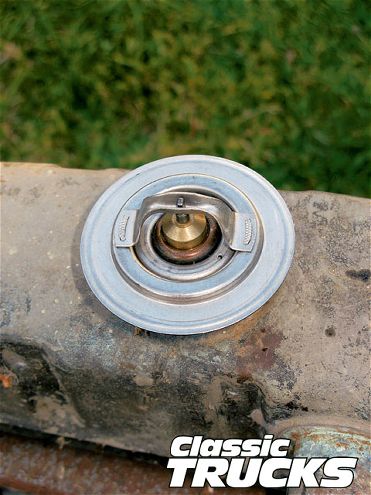 A high-flow Superstat thermostat can flow around 22-28 gallons per minute (GPM), which is a huge increase over a standard thermostat and can oftentimes make or break the cooling system.
A high-flow Superstat thermostat can flow around 22-28 gallons per minute (GPM), which is a huge increase over a standard thermostat and can oftentimes make or break the cooling system.
* Use a 50-50 mix of water and ethylene glycol (coolant).
* Back-flush the cooling system whenever possible to eliminate any foreign objects/debris that may gather in the cooling passages.
* Use a 185- to 195-degree Superstat or equivalent high-flow thermostat (with appropriate cap pressure).
* Ensure that the overflow tank on your cooling system is adequate to collect the coolant that is purged from the system. A tank with a quart to a quart and a half is typical for a V-8 system.
* Ensure that there are sufficient openings in the engine compartment to allow the exit of all air drawn from the front of the vehicle.
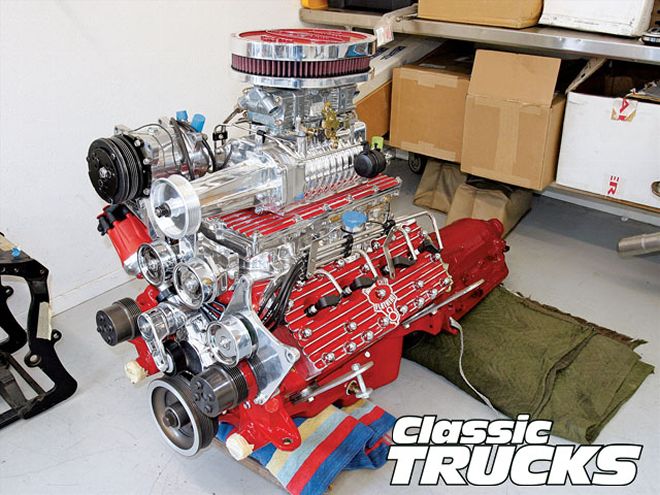 The proper pulley combination is something that should be considered as well. Here's a classic example of a motor that is notorious for running hot: the Ford Flathead. A properly configured pulley combination, along with new water pumps, will definitely help ensure this engine stays around its intended operating temperature.
The proper pulley combination is something that should be considered as well. Here's a classic example of a motor that is notorious for running hot: the Ford Flathead. A properly configured pulley combination, along with new water pumps, will definitely help ensure this engine stays around its intended operating temperature.
Coolants
Like the oil that lubricates and keeps your engine running (or should), the coolant you choose to help cool that same engine should be chosen wisely. And unless you live in a paradise-like atmosphere, straight water won't cut it for anything street driven. So, just what is the best all-around coolant, if there even is such a thing? First, let's weigh our options: Ethylene glycol versus propylene glycol.
Ethylene glycol (EG) is the good-old yellow antifreeze we're all accustomed to by now-you know, the stuff that can kill your dog, is bad for the environment, and-for those fortunate enough to fall for the marketing ploy-comes conveniently pre-mixed 50-50 with water (for the same price as a full bottle of unmixed antifreeze!). It does just what it's supposed to do when used accordingly-cool an engine-but it's also toxic and non-biodegradable.
Propylene glycol (PG), on the other hand, is more tree-hugger friendly. Typically, this formulation is substantially less toxic, but at the same time, offers nearly the same cooling characteristics as EG-sometimes, even more so. In the case of Amsoil's Antifreeze and Coolant, the company claims consumers can expect to get seven (yes, seven!) years, or 250,000 miles, use just out of one treatment. Furthermore, on top of being compatible with ALL brands of coolant-including DEX-Cool, Sierra, and Zerex-Amsoil Antifreeze and Coolant is also reported to help stop leaks (cause by hairline cracks in welds and seams) due to its ability to adhere to metal.